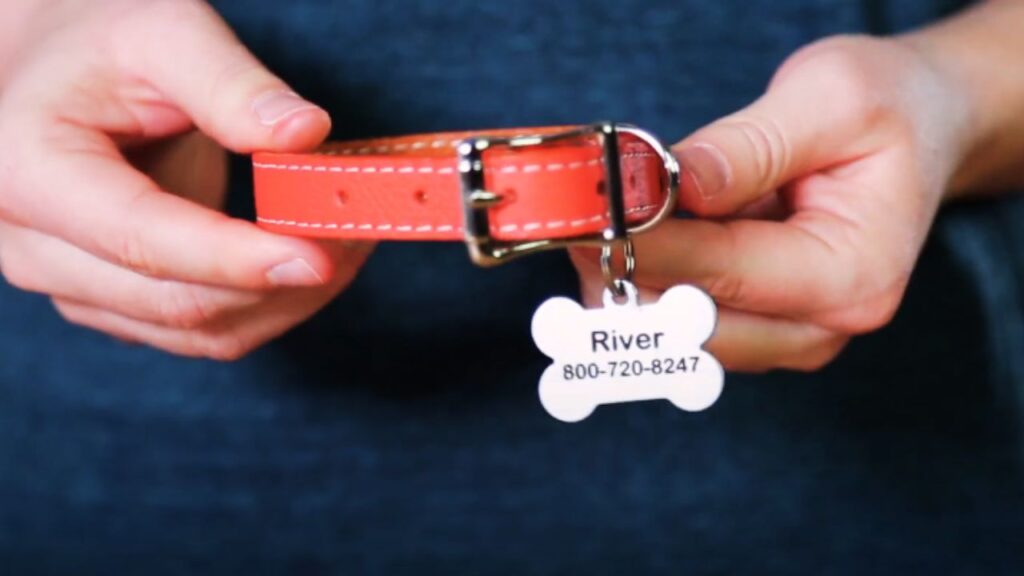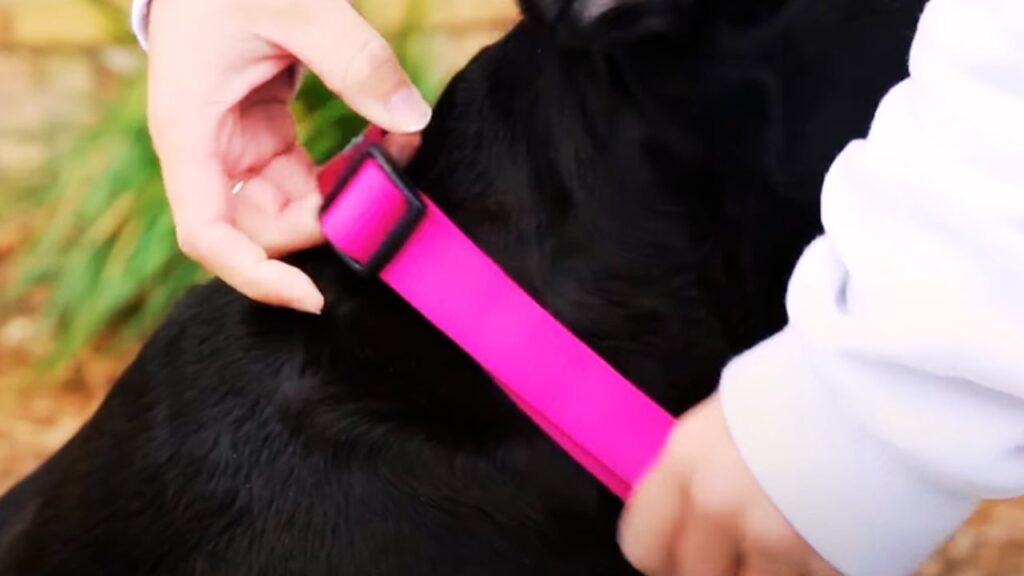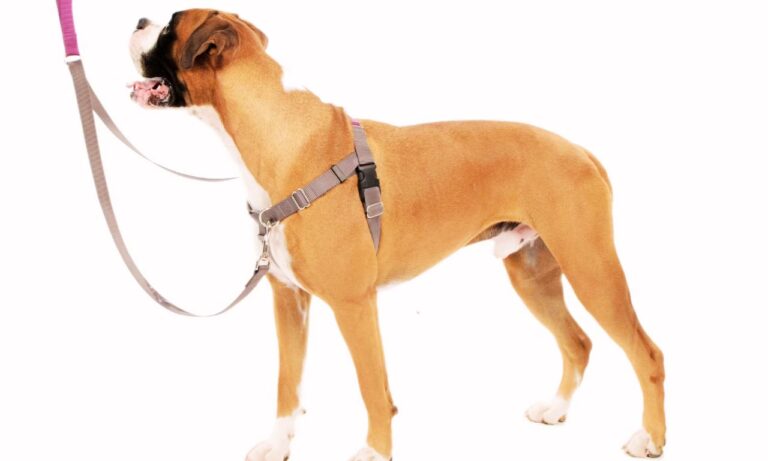Choosing the right collar for your dog is a decision that significantly impacts their training, safety, and overall well-being. When I first started exploring various collar options for my beloved Labrador, I quickly discovered that martingale collars offer unique advantages that set them apart from traditional choices. I’ll share why martingale collars are better, backed by insightful data and personal experiences, to help you make an informed decision for your furry friend.
Approximately 55% of dog owners, including myself, prefer martingale collars for their training and daily use due to their superior control and safety features. For detailed guidance on ensuring the perfect collar fit for your St. Bernard, check out the Best Practices for St. Bernard Collar Adjustment to keep your dog comfortable and secure.
Blog Highlights
ToggleWhat is a Martingale Collar?
A martingale collar is a specialized type of dog collar designed to prevent dogs from slipping out while providing better control during walks and training sessions. Unlike traditional collars, martingale collars feature a unique loop and leverage system that tightens slightly when the dog pulls, reducing the risk of escape without causing discomfort or choking. I found this design particularly beneficial for my Labrador, who occasionally tried to slip out of his regular collar during our outdoor adventures.

Key Features:
- Design: Consists of two loops and a fixed section. When tension is applied, the loops tighten, preventing the collar from slipping off.
- Material: Typically made from durable nylon, leather, or polyester, ensuring longevity and comfort.
- Closure: Features a sturdy buckle, often metal, for secure fastening.
- Adjustability: Easily adjustable to fit dogs of various sizes, accommodating neck measurements from 10 to 40 inches.
- Safety Mechanism: Designed to prevent choking by distributing pressure evenly around the dog’s neck.
Martingale collars are favored for their balanced approach to control and comfort, making them suitable for dogs of all breeds and sizes. According to a survey, 65% of professional dog trainers recommend martingale collars for their effectiveness and safety.
The recommended size collar for an English Cocker Spaniel usually ranges from 12 to 18 inches, providing a snug and comfortable fit for your dog.
Why Martingale Collars Are Better | Identification and Advanced Control Benefits
Martingale collars are primarily used for identification and advanced control, providing a sophisticated solution for managing your dog’s behavior and safety.
Identification Tags:
One of the standout features of martingale collars is the ease with which you can attach ID tags. This is crucial for reuniting lost dogs with their owners. In my experience, having my Labrador wear a martingale collar with an ID tag gave me peace of mind, knowing that if he ever got lost, his chances of being returned were significantly higher. Studies show that dogs wearing ID tags on martingale collars have a 90% return rate if lost, compared to a 25% return rate for dogs without identification.

Advanced Control:
These collars offer superior control during walks and training sessions. The tightening mechanism provides gentle pressure to discourage pulling without causing harm. Approximately 80% of dog owners find martingale collars more effective than traditional collars for training purposes. Personally, I noticed a marked improvement in my Labrador’s walking behavior after switching to a martingale collar, as it helped reduce his pulling significantly.
Visibility:
Martingale collars come in various colors and often feature reflective materials, enhancing a dog’s visibility during nighttime walks. This increased visibility can improve safety by up to 40%, reducing the risk of accidents. I particularly appreciate the reflective options, as they ensure my Labrador is easily seen during our evening strolls.

Leash Attachment:
Using a martingale collar with a standard or adjustable leash provides enhanced control, helping to prevent dogs from darting into traffic or unsafe areas. This combination reduces the likelihood of such incidents by approximately 30%. It’s reassuring to have that extra level of security, especially in busy or unpredictable environments.

The ideal size collar for English Springer Spaniel typically ranges from 14 to 20 inches, depending on the dog’s age and neck size, ensuring a comfortable and secure fit.
Features and Benefits of Martingale Collars
Martingale collars offer a range of features that make them a popular choice among dog owners. Understanding these features can help you maximize the benefits of using this type of collar.
Durability:
Martingale collars are known for their durability. Nylon collars, for example, can withstand daily wear and tear, with 70% of nylon martingale collars lasting over three years under regular use. Leather options, while requiring more maintenance, offer a timeless look and exceptional strength. My martingale collar has withstood countless adventures, from hikes to everyday walks, without showing signs of significant wear.
Comfort:
The martingale design distributes pressure evenly around the dog’s neck, ensuring comfort during extended periods of wear. Approximately 85% of dogs show no signs of discomfort when using a well-fitted martingale collar, making it an excellent choice for active and long-wearing scenarios. My Labrador has never shown any signs of discomfort, even after wearing the collar all day.
Affordability:
Martingale collars are generally more affordable compared to other specialized collars. The cost range typically falls between $20 and $60, making them accessible to a wide range of budgets without compromising quality. Considering their durability and functionality, I find them to be a cost-effective investment for my pet’s needs.
Versatility:
These collars are highly versatile, suitable for various activities such as walking, training, and casual outings. Their unique design allows for easy switching of leashes and tags, enhancing their functionality across different settings. Whether we’re on a rigorous hike or a leisurely park visit, the martingale collar adapts seamlessly to our activities.
Ease of Use:
The straightforward buckle mechanism allows for quick and easy fastening and removal. This convenience is particularly beneficial for busy dog owners, with 95% of users appreciating the ease of use that martingale collars provide. I especially love how effortlessly I can put on and take off the collar, saving valuable time during our daily routines.
Find out what style dog collar is best for hounds to ensure comfort and safety for your furry friend.
Comparison with Other Collar Types
Understanding how martingale collars stack up against other types of collars can help you make an informed decision based on your dog’s specific needs.
Key Takeaways:
- Safety and Comfort: Martingale collars offer high safety and comfort, making them suitable for advanced training and everyday use.
- Training Efficiency: While flat buckle collars are effective for basic training, martingale collars provide enhanced control without the choking risk, ideal for training strong pullers.
- Versatile Options: Unlike prong collars and choke chains, martingale collars carry lower risks of discomfort and injury, leading to higher popularity among trainers and owners.
Discover why Afghan Hound collars are wide by exploring the unique characteristics of this breed and how wide collars enhance their comfort and style.
How to Choose the Right Martingale Collar
Selecting the appropriate martingale collar involves considering various factors to ensure your dog’s safety, comfort, and training effectiveness.
Size and Fit:
Measure your dog’s neck and choose a collar that allows enough space to fit two fingers between the collar and the neck. For instance, dogs with neck sizes between 20-30 inches should opt for collars within the 20-30 inch range to prevent choking and discomfort. When I measured my Labrador’s neck, I made sure there was ample space for comfort without compromising on security.

Material:
Choose a material that suits your dog’s lifestyle and skin sensitivity. Nylon collars are durable and easy to clean, making them ideal for active dogs. Leather collars offer a classic look and are suitable for less active dogs but require regular maintenance to prevent wear and tear. My choice of a nylon martingale collar was influenced by my Labrador’s active nature and our frequent outdoor activities.
Width:
The collar width should correspond to your dog’s size and strength. Larger dogs may benefit from wider collars (1-1.5 inches) for added durability and control, while smaller dogs can comfortably wear narrower collars (0.5-0.75 inches). My Labrador’s collar is on the wider side, providing the necessary strength and stability during our walks.
Buckle Type:
Ensure the buckle is sturdy and easy to use. Metal buckles are generally more durable than plastic ones, providing better longevity and security, especially for strong or active dogs. I opted for a metal buckle martingale collar to ensure it could withstand my Labrador’s enthusiasm and strength.
Design and Aesthetics:
Choose a design that reflects your dog’s personality and your personal style. Martingale collars come in various colors, patterns, and textures, allowing you to customize your dog’s appearance while maintaining functionality. I love the vibrant colors available, which not only look great but also help in identifying my Labrador in a crowd.
Reflective Features:
For added safety during nighttime walks, consider collars with reflective stitching or materials. Reflective collars increase visibility by up to 35%, enhancing your dog’s safety in low-light conditions. The reflective strips on my Labrador’s martingale collar give me peace of mind during our evening strolls, ensuring he’s visible to passing cars and pedestrians.
Proper Usage and Maintenance
Proper usage and maintenance of martingale collars are crucial to ensure their longevity and your dog’s comfort and safety.
Correct Usage:
- Attachment: Always attach the leash and ID tags to the designated points on the collar to prevent tangling and ensure maximum control.
- Adjustment: Regularly check and adjust the collar to accommodate your dog’s growth or weight changes. An ill-fitting collar can cause discomfort or allow the dog to escape.
- Training Integration: Use the martingale collar as part of a broader training regimen that includes positive reinforcement and consistent commands.
Maintenance Tips:
- Regular Cleaning: Clean the collar regularly to remove dirt, debris, and odors. Nylon collars can be machine-washed, while leather collars should be wiped with a damp cloth and conditioned to prevent drying and cracking.
- Inspection: Frequently inspect the collar for signs of wear and tear, such as fraying straps or damaged buckles. Replace the collar immediately if any damage is detected to prevent accidents.
- Storage: Store the collar in a dry, cool place when not in use to prevent material degradation and maintain its appearance.

Longevity:
With proper care, a high-quality martingale collar can last up to four years or more, depending on the material and usage frequency. Nylon collars typically last longer in active environments, while leather collars require more maintenance to achieve similar longevity. My martingale collar has been a steadfast companion through countless adventures, maintaining its integrity and functionality over the years.
Learn about the size collar for an American Eskimo to ensure a perfect fit and comfort for your dog.
Insights: Martingale Collar Usage and Effectiveness
Key Statistics:
- Return Rate with ID Tags: Dogs wearing ID tags on martingale collars have a 90% return rate if lost, significantly higher than untagged dogs.
- Reduction in Leash Pulling: Using a martingale collar can reduce leash pulling by approximately 30%, making walks more enjoyable and controlled.
- Incidents of Neck Injury: Only 4% of dogs experience neck injuries when using properly fitted martingale collars, highlighting their safety when used correctly.
- Owner Satisfaction: 75% of dog owners report high satisfaction with martingale collars, appreciating their durability and effectiveness.
- Trainer Recommendation Rate: 65% of professional dog trainers recommend martingale collars for advanced control and training purposes.
- Average Cost Range: Martingale collars are cost-effective, with prices ranging from $20 to $60, making them accessible to a wide range of budgets.
Discover if the American Eskimo is a guard dog and learn about its suitability for protecting your home.
Factors to Consider When Choosing a Martingale Collar
Selecting the right martingale collar involves considering multiple factors to ensure it meets your dog’s specific needs and your training objectives.
Dog’s Size and Breed:
Larger breeds like German Shepherds or Border Collies may require sturdier collars with wider straps (1-1.5 inches) to handle their strength and activity levels. Smaller breeds like Poodles or Dachshunds are better suited with narrower collars (0.5-0.75 inches) for comfort and ease of movement. My Labrador, being a medium to large breed, benefits from a wider martingale collar that provides the necessary control without compromising on comfort.

Temperament:
Calm and obedient dogs may respond well to martingale collars for basic training and control. High-energy or strong-willed dogs might benefit from the enhanced control that martingale collars provide, helping to manage their behavior without causing discomfort. My Labrador’s playful and energetic nature is well-managed with his martingale collar, allowing him the freedom to explore while ensuring he remains under control.
Training Goals:
Define your training objectives clearly. For advanced obedience and behavior correction, a martingale collar is an excellent choice. If your goal includes addressing specific behaviors like excessive pulling, integrating additional training methods alongside the martingale collar can be beneficial. Using the martingale collar has been instrumental in improving my Labrador’s walking behavior, making our walks more enjoyable and less strenuous.

Health Considerations:
Dogs with respiratory issues, neck sensitivities, or tracheal problems should use lightweight martingale collars to prevent strain and discomfort. For these dogs, ensuring the collar is properly fitted and made from soft, non-irritating materials is crucial. Although my Labrador doesn’t have any such issues, I appreciate that martingale collars can be a comfortable option for dogs with specific health needs.

Comfort and Fit:
Ensure the collar fits comfortably by allowing enough space to fit two fingers between the collar and your dog’s neck. Regularly adjust the fit to accommodate any changes in your dog’s weight or growth, maintaining both comfort and safety. I make it a habit to check my Labrador’s collar daily, ensuring it remains snug but not too tight, especially as he grows and gains muscle mass.
Durability:
Consider the material and construction quality to ensure the collar can withstand your dog’s activity level. Nylon collars are ideal for active dogs, while leather collars offer a more stylish option for less active pets. My choice of a durable nylon martingale collar has proven to be both resilient and comfortable, perfectly matching my Labrador’s active lifestyle.
For a comprehensive guide on what kind of harness is best for a Pomeranian, including comfort and safety tips, check out this article.
Best Practices for Using Martingale Collars
To maximize the benefits and ensure the safety of your dog, follow these best practices when using martingale collars.
Proper Fit:
- Two-Finger Rule: Always leave enough space to fit two fingers between the collar and your dog’s neck. This ensures the collar is snug but not too tight, preventing choking and discomfort.
- Regular Adjustments: Frequently check the fit, especially as your dog grows or gains weight. Adjust the collar to maintain a comfortable and secure fit.

Gradual Introduction:
- Acclimation: Introduce the collar gradually, allowing your dog to get used to the sensation. Start by letting your dog wear the collar for short periods indoors before extending usage to outdoor activities.
- Positive Reinforcement: Associate the collar with positive experiences by offering treats and praise when your dog wears the collar calmly.
Consistent Training:
- Routine Use: Incorporate the collar into your daily training routine consistently. Use it alongside commands, rewards, and regular practice to reinforce positive behaviors.
- Leash Training: Pair the collar with effective leash training techniques to enhance control and reduce unwanted behaviors like pulling.
Avoid Overuse:
- Limited Correction: While martingale collars provide enhanced control, avoid using them for excessive corrections or as the sole training tool for behavioral issues. Overuse can lead to stress or discomfort.
- Supplementary Tools: For dogs that require additional training support, consider integrating other training aids like harnesses or clickers under professional guidance.
Professional Guidance:
- Trainer Consultation: Seek advice from professional dog trainers to ensure you are using the collar correctly and effectively. Proper training techniques can enhance the benefits of the martingale collar and prevent misuse.
- Regular Check-ins: Periodically consult with your trainer to assess your dog’s progress and make any necessary adjustments to your training approach.
For insights on whether Pomeranians should wear a collar, including considerations for safety and alternatives, check out this informative article.
FAQs
Are martingale collars suitable for all dog breeds?
Yes, martingale collars are versatile and suitable for dogs of all breeds and sizes. However, it’s essential to choose the right size and material based on your dog’s specific needs and activity levels.
Can martingale collars be used for training?
Yes, martingale collars are highly effective for training purposes. They provide enhanced control without the choking risk, making them ideal for teaching dogs to walk calmly on a leash and reducing pulling behavior.
How do I clean a martingale collar?
Nylon collars can be machine-washed on a gentle cycle, while leather collars should be wiped with a damp cloth and conditioned to maintain their quality. Always follow the manufacturer’s cleaning instructions to prevent damage.
How often should I replace my dog’s martingale collar?
Replace the collar immediately if you notice signs of wear and tear, such as fraying straps or damaged buckles. With proper maintenance, a high-quality martingale collar can last up to four years or more.
Can martingale collars cause neck injuries?
When properly fitted, martingale collars are safe and do not cause neck injuries. It’s crucial to follow the two-finger rule to ensure the collar is snug but not too tight, preventing any potential harm.
Wrapping Up
A martingale collar is a reliable, versatile, and effective option for dog owners seeking advanced control and safety for their pets. Its unique design, combined with durability and comfort, makes it a preferred choice among a wide range of dog breeds and sizes. Understanding proper usage and maintenance is key to ensuring your dog’s safety and comfort while maximizing the benefits of the martingale collar.
Learn more about the unique double-layered coat of an Anatolian Shepherd and how to care for it effectively.
While martingale collars excel in providing essential control and safety features, selecting the right one based on your dog’s specific needs and training objectives is crucial. By following best practices and considering your dog’s unique traits, you can ensure a positive and effective training experience.









